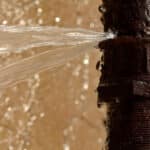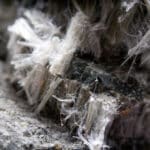
Burst Pipe Recovery: Steps to Minimize Damage in Homes
March 19, 2025
How Many Homes in Dallas Still Have Asbestos in Them?
June 9, 2025After a fire, the flames may be extinguished, but the aftermath—particularly the pungent, acrid smell of soot—can linger for weeks or even months. This odor not only makes living conditions uncomfortable but can also pose health risks. Whether it was a small kitchen fire or a more serious blaze, smoke and soot permeated deep into walls, carpets, furniture, and HVAC systems.
Why Does Soot Smell Linger So Long?
Soot is the black, powdery residue left behind by incomplete combustion. It consists of carbon particles, acids, chemicals, and oils that cling to virtually any surface. Because soot particles are so fine, they can travel deep into porous materials like drywall, upholstery, and wood—making them difficult to eliminate with surface cleaning alone.
The smell associated with soot comes from volatile organic compounds (VOCs) released during the fire. These compounds can continue to emit odors long after the visible residue is gone if not properly addressed.
Step-by-Step Guide to Removing Soot Odors from Your Home
1. Ensure Safety First
Before you begin any cleanup process, make sure your home is structurally safe and cleared by fire authorities. Wear appropriate personal protective equipment (PPE) including gloves, goggles, and a respirator mask to avoid inhaling harmful particles.
2. Ventilate the Entire House
Airflow is your first line of defense against lingering odors. Open every window and door, and use fans to circulate fresh air.
- Use box fans facing outward to help push contaminated air outside.
- Replace HVAC filters or temporarily turn off your system to prevent spreading soot particles.
3. Deep Clean Surfaces with Soot Removal Techniques
Not all cleaning agents are created equal when it comes to soot. Avoid water-only cleaning—it can smear soot and worsen stains.
Recommended cleaning methods:
- Dry Cleaning Sponge (Chemical Sponge): Great for walls, ceilings, and surfaces. Gently wipe without adding moisture.
- Trisodium Phosphate (TSP) Cleaner: A heavy-duty degreaser that cuts through soot. Mix with warm water and use with a sponge or cloth.
- Baking Soda Paste: Natural odor neutralizer for smaller areas.
- Vinegar Spray: Use a 1:1 vinegar and water mix to deodorize and break down particles.
Make sure to start cleaning from the ceiling down to avoid re-soiling cleaned areas.
4. Wash Fabrics and Soft Furnishings
Soot odors cling stubbornly to soft items such as:
- Curtains
- Upholstery
- Clothing
- Carpets
- Bedding
Cleaning tips:
- Wash washable fabrics in hot water with vinegar or a specialized smoke odor eliminator detergent.
- Steam clean carpets and upholstered furniture.
- If possible, place items outdoors in the sun, which helps eliminate odors through UV exposure and ventilation.
- Use activated charcoal or baking soda sachets in closets and drawers to absorb smells.
5. Clean or Replace HVAC Filters and Air Ducts
Your HVAC system could be circulating soot and odor throughout your home. Here’s what you should do:
- Replace all filters immediately.
- Consider having your air ducts professionally cleaned.
- Use HEPA air purifiers in main living areas to trap airborne soot particles.
6. Use Odor Neutralizers and Deodorizers
While cleaning removes soot, odor neutralizers target the smell itself.
- Activated charcoal bags placed in each room can absorb lingering odors.
- Ozone machines and thermal fogging are professional techniques that eliminate odor molecules at a molecular level.
- Hydroxyl generators are another safe, eco-friendly professional option, especially for homes with pets or people sensitive to ozone.
7. Seal Surfaces to Trap Odors
In some cases, odor penetrates so deeply into porous materials that even after cleaning, the smell persists. One solution is odor-blocking primers or sealants applied to walls, ceilings, and floors before repainting or resurfacing.
When Should You Call a Fire Damage Restoration Professional?
DIY efforts can only go so far. If the smoke odor remains after thorough cleaning or if the fire affected a large portion of your home, it’s best to consult experts.
Professional services offered by fire restoration companies like JDR Restoration include:
- Full structural cleaning
- HVAC decontamination
- Ozone or hydroxyl treatments
- Deep deodorization with thermal fogging
- Fabric restoration
- Repainting and sealing
Professionals use industrial-grade equipment and techniques that are simply not available to the average homeowner. Plus, attempting to remove soot without proper training may spread it further or cause permanent damage.
The Health Risks of Lingering Soot
It’s important to act quickly not just for comfort—but for your health. Lingering soot and smoke can cause:
- Respiratory problems
- Skin and eye irritation
- Allergic reactions
- Increased risk for long-term lung damage in sensitive individuals (children, elderly, asthmatics)
If anyone in your home is experiencing unexplained coughing, headaches, or eye irritation after a fire, the air quality could be the culprit.
Preventing Future Smoke Odor Problems
- Install smoke detectors and carbon monoxide detectors on every floor.
- Regularly clean your chimney, fireplace, and HVAC system.
- Use fire-safe cooking habits and avoid leaving open flames unattended.
- Keep a fire extinguisher in key areas of your home.
Contact JDR Restoration for Professional Soot Removal Services
Removing the smell of soot from your house is possible, but it requires more than just opening windows and spraying air freshener. From deep cleaning techniques to professional restoration services, eliminating smoke odor is a detailed and often time-sensitive process.
At JDR Restoration, we specialize in helping homeowners recover after a fire. Our expert team uses advanced equipment and proven methods to restore not just the structure of your home, but the comfort of clean, breathable air.
If your home still smells like soot no matter what you’ve tried, contact us today for a free assessment and let us help you breathe easy again.



